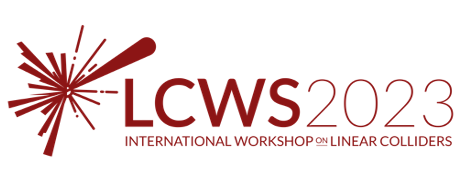Speaker
Description
The colour neutral sector is the one most relevant for the suggestions SUSY presents
to the problems of the the SM - the hierarchy problem, naturalness, dark matter, the
muon g-2 enigma. This sector is both for theoretical reasons, and from the results of
global fits, expected to be light. But, unfortunately, it is also the sector for which
current energy frontier colliders, viz. the LHC, is less well adapted.
In contrast, any future high energy electron-positron collider offers an excellent facility
for SUSY searches in general, and for searches in the colour neutral sector in particular.
Among the particles in this part of the SUSY spectrum, the superpartner of the tau-lepton,
the stau, plays an important role. The stau is likely to be the lightest of the
sfermions, so to be the first SUSY particle that could be observed. As a benchmark for the
power of SUSY searches, the stau is the prime candidate, as it can for good reasons be
regarded as the worst and thus most general scenario for the searches: If one can find the
stau, then any alternative next-to-lightest SUSY particle (NLSP) will also be findable.
In this contribution, a detailed study of the direct stau pair-production at the International
Linear Collider (ILC) has been performed, showing the capability of this collider for determining
stau exclusion/discovery limits in a model-independent way.
The studies were done using the full detector simulation and reconstruction procedures of the
International Large Detector concept (ILD) at the ILC. The simulation included all SM backgrounds,
as well as the beam induced ones. A detailed study of the effect of beam induced backgrounds, as
overlay-on-physics and - for the first time - overlay-only events, in the stau limits was performed.
The analysis of the worst mixing for stau searches at the ILC conditions is also included.
We have thus carefully evaluated all possible complications, both theoretically
and experimentally, and are confident that this analysis indeed confirms the statement that at a
linear e+e- collider, SUSY will be discovered if the NLSP mass is up to just a few GeV below
the kinematic limit of the collider.



